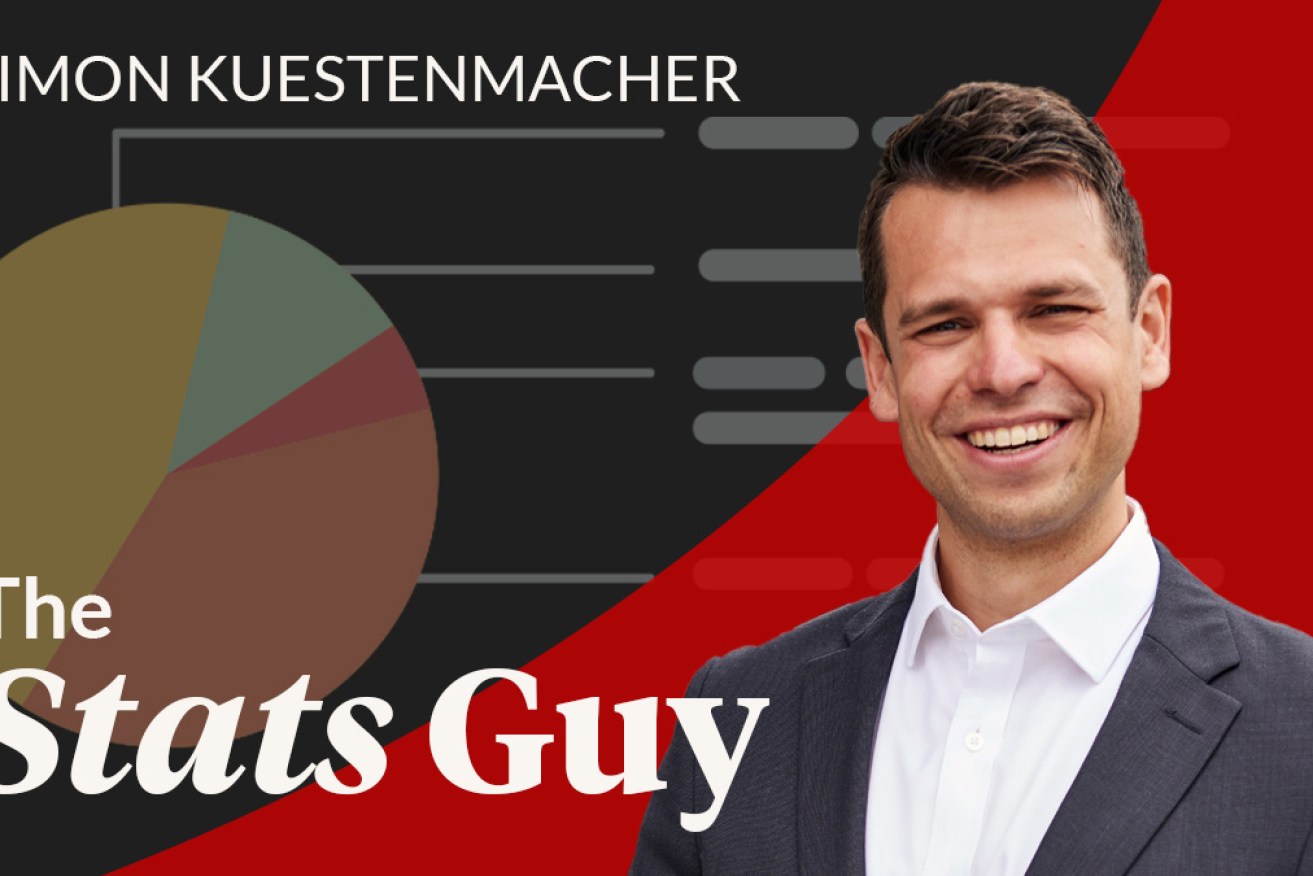The Stats Guy : Is Germany or Australia handling the pandemic better?


It's Australia v Germany in Simon Kuestenmacher's latest look at the stats. Image: TND
Right now is the hardest time in every five-year cycle to write a data column in Australia. The 2016 Census data is outdated and the 2021 Census data won’t be released until June 2022. On top of this, no major datasets are released during the Christmas break.
The obvious thing to do now is to write about international topics. Since I am currently holidaying in my country of birth, we will compare Germany and Australia.
German Down Under
The cliches about Germany are mostly positive these days. We are generally assumed to be punctual, diligent and orderly. In the world of work, such stereotypes serve us German expats well. Even the negative stereotype of Germans being humourless works in our favour since even the slightest hint of a sense of humour is a welcome surprise.
Germans in Australia enjoy the easy-going and relaxed nature of the Australian people, the mild winters and the cosmopolitan nature of the big cities. All the while, Germans (if not all Europeans) Down Under rightly criticise the poor insulation in Australian homes and the substandard cycling infrastructure. Of course, all logic-driven Huns willingly forgive the little Australian sins like light switches being unnecessarily small and Aldi not offering frozen pretzels all year long.
These days, any comparison of countries is, of course, largely a COVID-19 story. I am not interested in talking about how COVID feels, but, rather, I want to look at the best available data out there. The team at ourworldindata.org does a wonderful job of collating global COVID data.
Case by case
Let’s start by looking at the total COVID-19 caseloads in Australia and in Germany.
In Germany, six times as many people (7.1 million people in total, or 85,000 people per one million residents) caught COVID than in Australia (0.36 million people in total, or 14,000 people per one million residents).
Cases are only a crude measure of how successful a nation handled the pandemic. In a highly vaccinated population, the virus doesn’t kill as many. Australia is now putting its strategy to the test by exposing highly vaccinated people to the virus.
Source: ourworldindata.org
Vaccination nations
So, how successful were the vaccination campaigns in the two countries?
The pandemic isn’t over yet, and we can only observe the trends to date. Despite starting about half a year later than Germany, Australia has a much higher vaccination rate already (76 per cent of the total population compared to 70 per cent of Germany’s total population).
COVID treatments have also improved over the past 20 months. The record number of cases will hopefully not lead to record death tolls.

Source: ourworldindata.org
Number of deaths
Is the number of deaths really lower in Australia than in Germany?
So far, the virus has claimed far fewer victims in Australia (86 deaths per one million residents, or 2224 deaths in total) than in Germany (1330 deaths per one million residents, or 111,607 deaths in total).
The fact that Germans were 15 times more likely to die of COVID than Australians was not just due to the higher vaccination rate Down Under, or the relatively older population in Germany. Before Australian states had reached the 90 per cent vaccination rate (of the eligible population), they used stringent restrictions to protect the health of their residents.
Source: ourworldindata.org
Restrictions, restrictions, restrictions
As a Melburnian, I spent most of the past 20 months under strict restrictions and encountered the world’s longest lockdown.
I couldn’t meet my colleagues or friends, I couldn’t travel to conferences (which is how I earn my income), my parents couldn’t visit their first grandchild, my son wasn’t allowed on outdoor playground equipment, I wasn’t allowed to leave my home after 9pm, my gym was closed, I wore a mask whenever I left the house – you know the drill.
My point is the lockdown felt very restrictive. It’s extremely difficult to compare COVID-19 restrictions between countries, and I highly appreciate the efforts of researchers at the Blavatnik School of Government at the University of Oxford to quantify the stringency of governmental restrictions during the pandemic.
Although I was locked down with my fellow Victorians, people in the rest of the nation were mostly free. Compared to Victoria, the restrictions my friends across Germany lived through were a piece of cake. The toughest restrictions in Germany at the moment are a mask requirement for retail and the need to be vaccinated and tested when entering certain venues (cinemas, museums, gyms etc.).
As a Melburnian, I can only laugh at the current German restrictions being called a lockdown. But enough of Melbourne. Once we quantify the restrictions for the whole country, things weren’t that bad in Australia.
When you compare the data in the chart below, you want to mentally account for the opposite seasons that the two countries experienced at each point in time – imagine the Australian line six months behind or in front of the German line.
Source: ourworldindata.org
Money talks
But at what monetary cost (I know it’s hard to disregard mental health issues) did the COVID-19 restrictions come? Let’s compare the last quarter (Q4 2019) that wasn’t impacted by COVID with the most recent quarter we have data for (Q3 2021).
Germany’s GDP declined by 1.1 per cent over that timeframe, while Australia’s only declined by 0.2 per cent. Once again, I think Australians got the better deal.
Looking at these figures, I must conclude that (so far) my country of choice handled the pandemic better than my country of origin. Of course, we have only looked at the topic superficially here and haven’t even started to explore why the anti-vaxxer movement is much bigger in Germany, why the rift in society is bigger in Germany, and how the misguided attitude towards data privacy holds Germany back.
I don’t know about you, but this quick comparison of the two nations put me in a rather optimistic mood for 2022.
Happy New Year.











